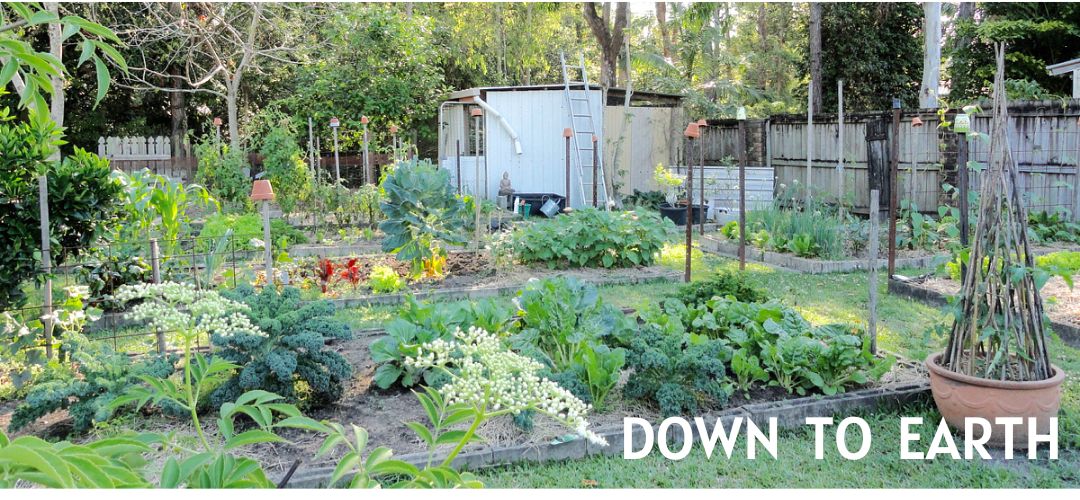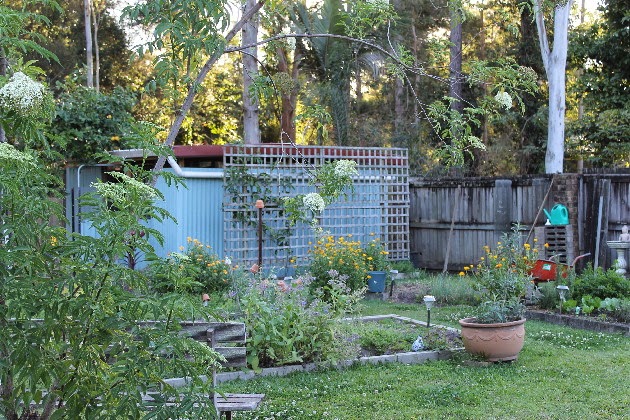This is our garden yesterday afternoon.
This year, production has stopped mid-season and changes are being made. We're growing older. We have to think of new ways to keep gardening but without the tiring jobs that make it more of a chore than it should be. Hanno is now harvesting our last crop of potatoes. They're Dutch Creams, a delicious waxy potato that holds its shape in salads, but is still very good mashed. These will be the last potatoes we grow. This year will be the last year too for cabbages, cauliflowers, broccoli, onions and turnips. There will be no more plantings of zucchinis, carrots, spinach or corn. From now on, we'll be concentrating on the fruits and vegetables we eat a lot of - tomatoes, lettuce, radishes, cucumber, beetroot, chilli, capsicums, chard, kale, beans and herbs. We'll continue growing fruit because it's easier to grow than vegetables - generally there are no repeat plantings, it's just fertilising, pruning, watering and harvesting. Simplifying in this way will be easier for a gardener with recurrent arthritis in his ankles and feet. We'll produce less overall but more of what we eat regularly, and we'll keep gardening.
The garden bed above is almost gone. This is where we'll put our table and chairs.
These two beds will stay.
To facilitate this change Hanno is removing a couple of our garden beds. We'll keep a bed for salad greens, Asian greens and kale, we'll have a combined flower bed with the flowering vegies, such as tomatoes and cucumbers. The herbs and other vegetables will be dotted around the remaining beds. Many people have suggested to us that we should have raised beds. We are garden soil people, we want to grow our food in active soil that is alive with microbes and minerals. The minerals are deep in the soil so we prefer traditional organic methods. So where garden beds once produced their crops, we'll have a table and some seating right in the middle of the garden. We'll be able to sit out there, under an umbrella, and listen to the bees and birds while we drink tea and talk.
There is some sadness in this decision. Not only because we won't have those fresh vegetables straight from the garden but there is the loss of something that's been part of our lives for a long time. But we'll still have our summer vegetables, herbs, flowers and fruit, and that will no doubt keep our green fingers moving and satisfy this insatiable urge to grow food and watch it grow to lush, ripe maturity.
This bed will go.
This will be the flower and flowering vegetables bed.
We'll cut this borage back and transplant it.
I see this as a sensible compromise. We will still be growing some food but the pressure is off to be prolific. We'll only plant what we know we can handle. We'll shop at a local farmers' market for the rest of our fresh food - thereby supporting the locals. But we'll still have that connection with our backyard as much as we ever did but it will be a relaxed and simple connection rather than a more complex and active one.






